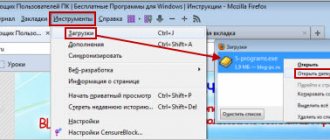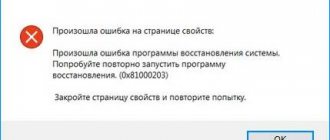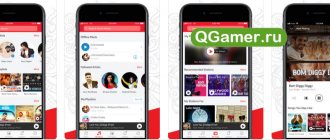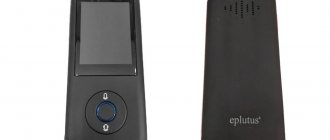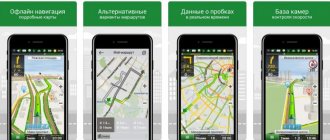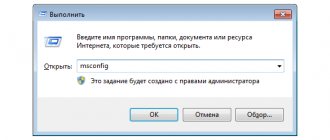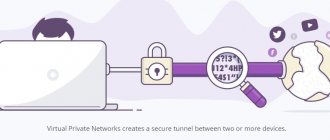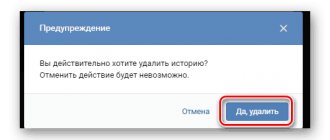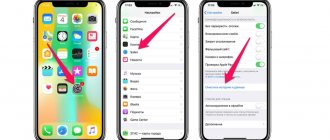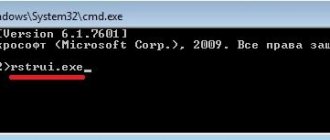Every day the volume of information from the network, and therefore on users’ computers, increases.
On the average user’s hard drives, the number of files can reach several hundred, and finding the one you need in the total mass is not at all easy. The standard Windows search engine does not always work quickly and has very limited functionality, so it makes sense to use third-party programs. In this review, we will look at several programs that will help you find the necessary data on your computer.
Search My Files
This program is perhaps the most powerful tool for searching PC disks. It has many fine settings, filters and functions. The distribution also includes additional utilities for interacting with the file system.
One of the distinctive features of Search My Files is the ability to completely delete files by overwriting with zeros or random data.
Search bar on landing screen
Search bar on landing screen
Here are screenshots of a few popular apps that use a search bar on the landing screen. In most cases the search bar is easy to find when it is located at the top of the screen.
User Experience Management and Service Design
Don't miss your chance to learn all aspects of the profession of a CX/UX specialist from leading experts!
10% discount with promo code “UXPUB”
More details
In this case, the search bar serves users who have a clear intent to search. Any suggestions or assistance the platform may provide will be based on the keyword entered by the user.
This explanation also applies to apps that have a search icon in the top right corner of the screen. I've combined these two options because they are very similar in terms of openness, accessibility, and require the same number of taps to use.
Everything
A simple search program with its own features. Everything can search for data not only on the local computer, but also on ETP and FTP servers. It stands out from other representatives of similar software in that it allows you to track changes in the computer’s file system.
R.E.M.
REM has a more friendly interface than previous participants. The principle of the program is to create zones in which files are automatically indexed, which can significantly speed up the search process. Zones can be created not only on the local computer, but also on disks on the network.
Search through "Explorer" in Windows 7, 8, 10
It happens that there is no point in searching for a file throughout the computer, so as not to waste extra time, because searching for a file throughout the computer can take a long time, depending on the amount of information on the computer, and especially since you know approximately in which folder or on which This file can be located on your local disk. To do this, it’s easier to use a search in a separate folder or local drive, i.e. through the Windows Explorer program. Let's look at an example based on Windows 7.
In Windows 8 and 10, searching through Explorer is absolutely no different!
Search in Explorer is located at the top right (1). When you open a folder, the search bar will indicate where the search will be performed (where you are now). For example, now I have the “Program Files” folder (2) open.
Let's say I want to find the "Drivers" folder in the "Program Files" folder where I am now. To do this, in the search at the top right (1) I write “drivers” or you can enter the first few letters (in case you don’t remember the full name). The results will appear below (2).
All that remains is to open the desired file, folder or program directly from the search results!
It can also sometimes be useful to use a filter when searching, for example, to search for files, folders and programs by a certain size or modification date. When you enter the name of what you are looking for, the filter modes will appear below:
Let's look at another example...
Somewhere on my “C:” drive I have a file for work called “Publish on the site.” Knowing that the file is located on the “C:” drive, I need to open Windows Explorer, and then this local drive in it. In the search, I type the beginning of the file name “published” (1) and the system finds the file I need (2), indicating below its location on the computer.
Tips for finding files. When searching for files in Windows, you can search by file extensions. For example, if you want to find all files with the .txt extension, then type *.txt in the search. Where * will mean that files with any names will be searched, but with the extension .txt.
Google Desktop Search
Developed by a world famous company, Google Desktop Search is a small local search engine. With its help, you can search for information both on your home PC and on the Internet. In addition to the main function, the program provides for the use of information blocks - gadgets for the desktop.
All of the programs in this list are great replacements for native Windows search. Choose for yourself: install simpler software, but with a smaller set of functions, or a whole search engine with the ability to process files. If you work with folders and drives on a local network, then REM and Everything are suitable for you, and if you plan to “carry the program with you,” then pay attention to Effective File Search or Search My Files.
We are glad that we were able to help you solve the problem. Add the Lumpics.ru website to your bookmarks and we will be useful to you. Thank the author and share the article on social networks.
Describe what didn't work for you. Our specialists will try to answer as quickly as possible.
How application search works on Google Play. Abstract
The article discusses some features of the application search in the Google Play store. Google rarely publicly discusses its search technologies, but in 2013 at the Google I/O 2013 conference it explained what influences the ranking of applications in the Google Play store.
Our team made a summary of this presentation with their comments and examples from practice. Video in English at the link, help guide Data management for Google Play. Google Play is a store where mobile applications, books, music, and films are available.
The stated development vector is store personalization. Google Play strives to display content in the store that is of interest to a particular user. Based on past experience, preferences, context of use and recommendations from friends.
The following are the main sources of organic installations:
Search in Google Play sections
This concept combines several scenarios when a user finds and discovers new applications on Google Play: 1.1.
Ratings (lists) of applications on Google Play (Top free, Top paid, Bestsellers, Top new free, Top new paid, Gaining popularity).
1.2.
Personal recommendations. Blocks with applications that Google Play creates based on the recommendations of your friends.
1.3.
Related/Cross Selling. Blocks “More applications from the developer”, “Install with this application”, “Similar applications”.
Here we are not considering manual selections from the Google Play team, called “features” in slang.
Choosing the right category for your application is important. For example, a user wants to find an alarm clock by browsing a category. He does not enter “alarm clock” into the search field, but goes to the category. In which? Tools? Miscellaneous? Health and Fitness? If the user goes to the Miscellaneous section, and our application is in the Tools section, he will not find it. Therefore, when choosing a category, it is advised to think as the user thinks.
Search applications
Many people underestimate the second source of installations – search itself.
It can be divided into 2 categories. 2.1. Category search
When we know which category the application we want to find belongs to. For example, an application with recipes, reviews of restaurants in a specific city, free or multiplayer games.
The user enters into the search the category of the application that will solve his problem (for example, “meat recipes”, “excursions around Moscow”).
2.2. Navigation search
In this case, we know exactly what we are looking for. For example, a friend told us about an application or we heard about it somewhere. We enter the name of this application and find it (for example, “Engry Birds”, “Facebook messenger”).
How important is app search:
— Every day, 12% of active users return to the store and look for new applications. — Over the course of a week, 50% of all active users return to the store and look for new applications. — Users enter more than 6 million unique search phrases per month. *Please note that these are data from 2013.
Anatomy of proper app design on Google Play
Short and clear application name
A unique and creative name is encouraged. The title should tell you what the app is about.
The name significantly affects the visibility of the application in searches (affects ASO - App Store Optimization). Therefore, many developers try to put in the title the main keywords that users will enter when searching.
Vivid and functional description
The application description is divided into 2 blocks.
Short and basic description. The main message must be contained in a short description. The short description significantly affects the visibility of the application. Google recommends using search engine optimization (SEO) guidelines when writing your app's basic description.
Next, we'll talk about how you can use your app page to enhance the user experience without deceiving them.
Current screenshots
The screenshots should show exactly what the user will see after installing the application. It is important not to disappoint expectations. If the screenshots and the application are different, there is a risk of receiving a negative reaction.
Video clip
A video can show users what the app is all about.
Game developers say that video is very helpful in explaining the content of the game to users. We made videos for our non-game applications, but this did not bring any tangible effect when promoting. Video can be a nice addition when doing a review.
Of the minuses: the application interface can change, so the video will have to be redone each time. Often there is not enough time for corrections, so the interface in the video and the interface in the current version of the application may differ significantly!
You need a budget to create a video. And when the video loses its relevance after a month, it’s a pity for that money.
Reviews and rating
On the application page, the user has the opportunity to rate the application and/or leave a review. For Google Play, a high rating is a very serious signal.
The impact of statistics on app rankings
Google Play ranks apps based on a number of factors.
One of the main ones is the number of app installations. The more installs you have, the higher the app ranks in the store. The peculiarity of searching by application is that Google Play takes into account not only the number of downloads, but also how many people later deleted this application (statistics are available in the Google Play Developer Console). The fewer users uninstalled the application, the better it solves their problem. This means it ranks higher.
It's not uncommon on Google Play to see an app with a lower rating and fewer installs rank higher than other apps that have a higher rating and more installs. In this case, such a factor as the ratio of application installations and uninstalls is taken into account.
Long delete
Google PLay distinguishes between when a user deletes an application immediately and when he does so over time (the so-called “long delete”).
If an app was used and then removed over time, Google Play does not consider this a negative factor. For example, a user has completed a game, and so that the application does not take up space on the phone, it deletes it.
Engagement
The next important factor is user engagement.
How much time does a person spend in the application, how often does he use it, etc. This takes into account the category of need that the application solves. If it's a weather information app, a few seconds in the app is enough to solve the user's problem. For gaming applications, this could be minutes or hours. In the case of a game, the longer the user spends time in the application, the higher the engagement.
Therefore, Google Play does not say that one application is bad and another is good. The application task and the category of need are taken into account.
We had a new application that, due to a small number of installations, had a very good install/uninstall ratio. There were hundreds of installations, the rating was 5.0 (again due to the small number of installations). Given these indicators, Google Play ranked this application higher for low-frequency queries than others, which had hundreds of thousands of installations. Then the performance worsened, and the application dropped lower in the list.
Google Play also builds rankings based on other factors. The preferences of users in a particular region and the type of device from which the search is conducted (mobile phone or tablet) are taken into account.
Hints
An important element when searching for an application are hints.
When you enter part of a search phrase, Google Play tries to guess what category of app you want to search for, or even a specific app. In the second case, the icon of this application may also be included in the tooltip. Keep these tips in mind when writing your app description. They show the popularity of a particular search phrase.
Rating table
Google reveals some of the factors that influence rankings. Ratings are formed by country, category, device type.
A brief description of each rating is in the help.
Different ratings are intended for different users. For example, Top free and Top paid are more suitable for new users or users with new devices. They want basic apps, they want to know what's most popular on Google Play. The Top New Paid and Top New Free ratings are aimed at users who already have basic apps and want to see what's new in the app store.
For paid applications, income is taken into account; for free applications, installations in a few days are taken into account.
Gaining popularity
The purpose of this section is to give users information about the apps that are gaining popularity right now.
This rating includes all applications - new and old. For each application, Google Play knows the projected growth rate of installs. And if at some point there are significantly more installations than predicted, the application is included in this rating.
Related and Cross Selling
On the application page there are such blocks as “More applications from this developer”, “Similar applications”, “Install with this”.
For developers, the “More applications from this developer” block is valuable.
In our applications, we noticed that with the active promotion of one of them, installations on others in our account increase. One of the projects accounted for about 5% of the installations of a neighboring application.
Those. conditionally, if Application A was installed by 1000 people, then Application B received about 50 installations due to traffic to Application A. Most likely, thanks to the “More applications from this developer” block and/or the developer’s page on Google Play.
The same applies to identical applications on different platforms. If we actively promote Application A on the Android platform, then installs of the same application on the iOS platform increase.
“Similar apps” and “Install with this” are made for the convenience of users. For the app owner, this is essentially advertising for competitors.
External factors and how to get to the main page
For a specific application, more than 80 factors are taken into account, and not all of them are related to Google Play. Signals from the Google search engine are also taken into account. All factors are not disclosed.
Impact of recommendations
This is the home page of two different users. As you can see, different applications are recommended for them. This is influenced by the past experiences of these users (what applications they searched for, what pages they visited, etc.), the context of the Google Play experience (if you are in New York, you will be offered an application with New York news, not Tokyo ), your device, as well as reviews and ratings from friends.
Category pages are also subject to personalization.
The most reliable way to get on Home Page is through recommendations from friends. So encourage users to leave reviews of your app and click +1.
We think this is very valuable advice. Everyone wants to know how to get featured by Google. But there is an easier way to get to the user’s home screen - a recommendation from his friends who are already using our application.
5 tips from the Google Play team after creating a quality application:
1. Adapt the application for tablets. In this case, the application will be available on Google Play for tablet users.
2. Google Play takes into account external links to the application, considering this a trust factor. Therefore, when ordering a review on a website about your application, ask for a link to the application in the Google Play store.
3.Adhere to these mandatory rules: - Do not create an app name that is close to an existing popular app. This leads to disappointing user expectations. — Use country and device targeting wisely, taking into account your app's audience. — Create the correct address for your application (the application link is formed from a parameter such as bundle).
4. The APK of your file should not weigh much. In addition to the fact that users try not to install heavy applications, these applications are also the first to be deleted if the user wants to clear the phone’s memory. Therefore, keep the APK file size smaller.
5. Use viral mechanics to promote your app.
People search with errors
Of the 6 million unique phrases that users enter during the month, 50% contain errors.
Very interesting statistics indeed. The fact is that now Google Play does not work with errors the way regular search works. The results of applications when you enter a search phrase with and without an error are different.
We haven’t come across any cases of dealing with errors, but at the dawn of SEO, when search engines worked poorly with errors, some webmasters used this to get traffic.
The abstract did not cover app localization in different countries (and how to increase the visibility of the app due to this), working with user reviews, tips for writing descriptions and screenshots, etc. These and other factors also influence the ranking of an application on Google Play and the user's decision whether to download the application or not.

